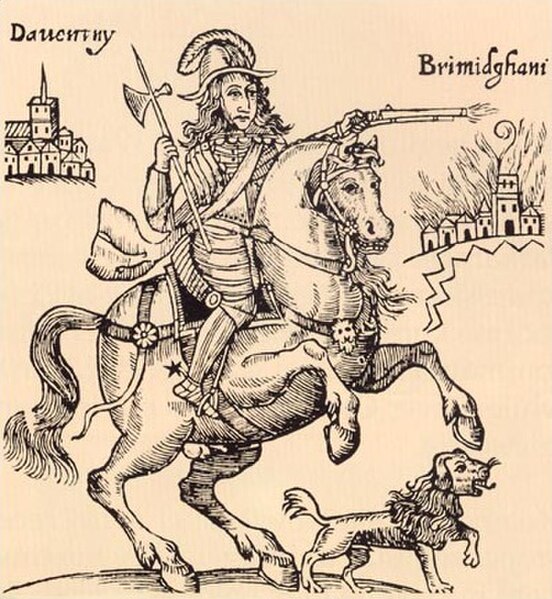In Mesoamerican folk religion, a nagual or nahual is a human being who has the power to shapeshift into their tonal animal counterpart. Nagualism is tied to the belief one can access power and spiritual insight by connecting with the tonal animal within.
The Nahuals described in the Borgia Codex, metamorphic creatures capable of changing their physical form into any other animal form or even into human forms at will.
A pre-Columbian Chatino stela possibly depicting a nagual transforming into a jaguar. His name is inscribed in Zapotec glyphs on his abdomen and translates to "Five Alligator".
In European folklore of the medieval and early modern periods, familiars were believed to be supernatural entities, interdimensional beings, or spiritual guardians that would protect or assist witches and cunning folk in their practice of magic, divination and spiritual insight. According to records of the time, those alleging to have had contact with familiar spirits reported that they could manifest as numerous forms, usually as an animal, but sometimes as a human or humanoid figure, and were described as "clearly defined, three-dimensional... forms, vivid with colour and animated with movement and sound", as opposed to descriptions of ghosts with their "smoky, undefined form[s]".
A late-16th-century English illustration of a witch feeding her familiars
A story of "a priest who for the space of 40 years employed a familiar spirit", illustrated in Elizabeth I of England's copy of the Histoires Prodigieuses by Pierre Boaistuau
Prince Rupert and his "familiar" dog in a pamphlet titled "The Cruel Practices of Prince Rupert" (1643)
The Love Potion by Evelyn De Morgan, 1903: a witch with a black cat familiar at her feet






